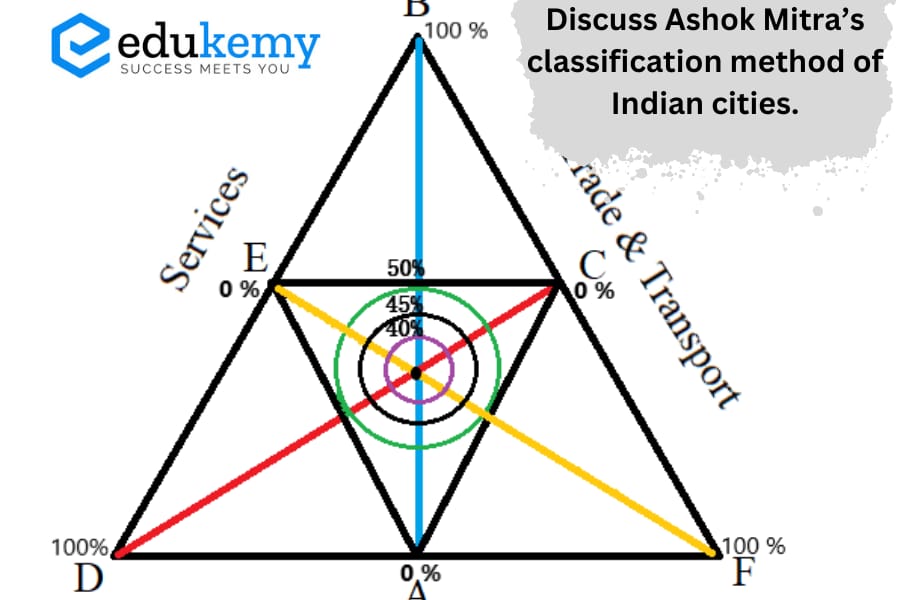
Ashok Mitra’s classification method of Indian cities is a flexible approach based on the dominant economic function, recognizing the multifunctional nature of urban centers.
This classification system considers manufacturing, trade & transport, and service activities, providing a practical framework for understanding the economic diversity of Indian cities.
Contents
Mitra’s Criteria for Functional Classification of Towns:
- Mitra excluded agricultural activities and focused on industries related to manufacturing, trade, transport, and services.
- He established criteria based on the proportion of workers in specific economic activities to determine the dominant economic function of a town.
Degree of Specialization of Economic Function:
- Mitra believed that towns vary in the extent to which they specialize in a particular economic function.
- Mitra used a ternary diagram to visually represent the degree of specialization, with points indicating different levels of specialization.
- The ternary diagram shows the percentage of workers in manufacturing, trade & transport and services on the three sides of the triangle.
Classes of Specialization:
Mitra drew three circles from the center of the triangle, proportionately, to show the degree of specialization. When we plot the percentage of workers of a dominant function in the ternary diagram, we get the following categories of specialization.
- Diversified Towns: The center point of the triangle shows 35 percent. Any point falling within the purple circle shows diversification of economic activities.
- Moderately Specialized: Any town falling between purple and black circle shows moderate functional predominance.
- Highly Specialized: The town falling between black and green circle points towards high functional predominance.
- Very Highly Specialized: Lastly, the point falling outside the green circle shows very high degree of specialization.
Relevance and Conclusion:
- Mitra’s classification method provides a practical framework for understanding the economic diversity of Indian cities.
- It allows for flexibility in classification based on the dominant economic activity and degree of specialization.
- However, Mitra’s exclusion of agricultural activities overlooks their significance in some urban areas.
- Nonetheless, the classification system retains flexibility and objectivity, making it relevant for policy formulation and urban planning.
Conclusion:
While it may not capture every aspect of urban economic activity, its flexibility and objectivity make it a valuable tool for policymakers and urban planners in addressing the diverse needs of Indian cities. Looking ahead, continued refinement and adaptation of this classification method can ensure its relevance in evolving urban landscapes
In case you still have your doubts, contact us on 9811333901.
For UPSC Prelims Resources, Click here
For Daily Updates and Study Material:
Join our Telegram Channel – Edukemy for IAS
- 1. Learn through Videos – here
- 2. Be Exam Ready by Practicing Daily MCQs – here
- 3. Daily Newsletter – Get all your Current Affairs Covered – here
- 4. Mains Answer Writing Practice – here

